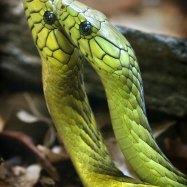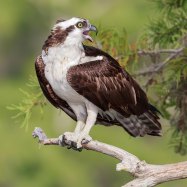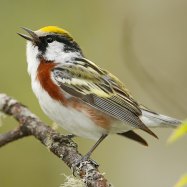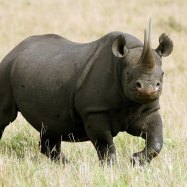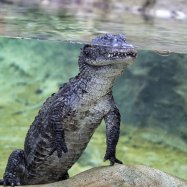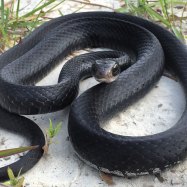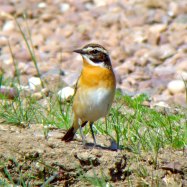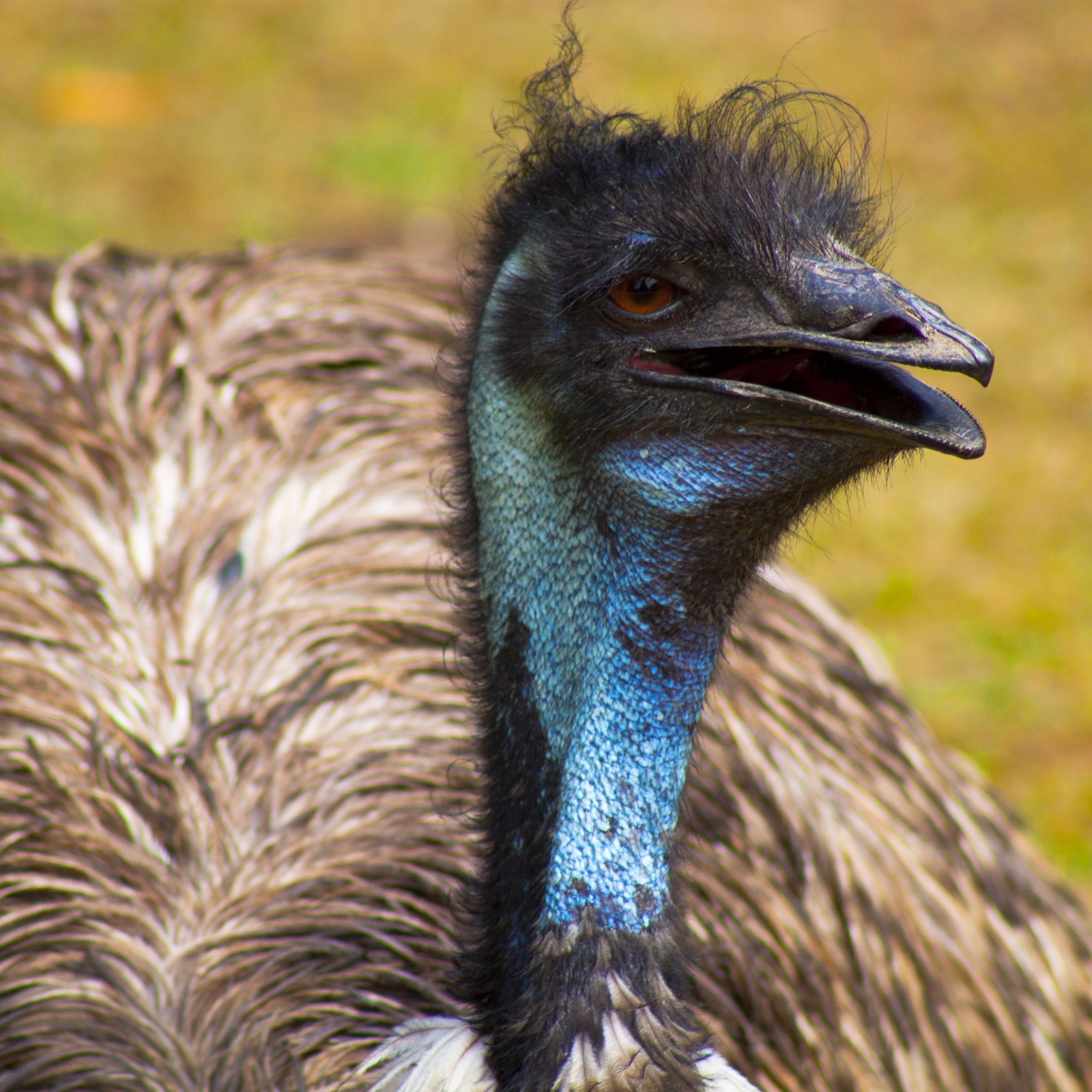
Ostrich
2.1 - 2.8 meters
The ostrich, one of the largest flightless birds in the world, can reach lengths of up to 2.8 meters. Found throughout Africa, these fascinating creatures belong to the Struthionidae family. Despite their inability to fly, ostriches make up for it with impressive speed and strength, making them a sight to see in the wild. #ostrich #africananimals #flightlessbirds
Animal Details Summary:
Common Name: Ostrich
Kingdom: Animalia
Habitat: Savannahs, woodlands, arid areas
Ostrich: The Majestic Bird of Africa
The vast, open savannahs of Africa are home to some of the most iconic and majestic animals in the world – lions, elephants, and giraffes. But among this impressive lineup of wildlife, there is one animal that stands out – the Ostrich.Scientifically known as Struthio camelus, the Ostrich is a large, flightless bird and the only living species of its family Struthionidae. It is most commonly found in Africa, spanning across multiple countries and thriving in a variety of habitats, from savannahs to woodlands to arid areas Ostrich.
As a member of the kingdom Animalia, phylum Chordata, and class Aves, the Ostrich shares characteristics with other animals such as its vertebrate structure and feathered appearance. However, this bird possesses some unique features that set it apart from its closest relatives.
The Body and Appearance of an Ostrich
One of the most striking features of an Ostrich is its distinct black and white coloration. Its body is mostly covered in feathers that are predominantly black with some patches of white on its wings and tail. This coloration serves as camouflage, blending in with the shadows and light of its habitat.But it's not just their coloration that makes Ostriches stand out. They are also the largest and heaviest of all living birds, with heights ranging from 2.1 to 2.8 meters and weights of up to 150 kilograms Old English Sheepdog. Their long, powerful legs allow them to cover long distances at a impressive speed of up to 70 kilometers per hour, making them the fastest bipedal animal on land.
The Ostrich's unique body shape is also due to its inability to fly. Unlike other birds, their wings are not strong enough for sustained flight, but they can use them for balance and steering while running. This physical adaptation is a result of their evolutionary history, where their ancestors gave up flying to focus on running, making them expert runners.
A Habitat Fit for an Ostrich
As mentioned earlier, Ostriches can be found in a diverse range of habitats across Africa, extending from the savannahs of East Africa to the semi-arid deserts of South Africa. Their adaptable nature allows them to thrive in different environments, as long as there is access to food and water.In the wild, these birds can be found in groups, called flocks, consisting of 10 to 50 individuals. Within these flocks, there is a dominant male, one or more breeding females, and their offspring. The group also serves as a form of protection against potential predators, such as lions and hyenas.
Within these flocks, Ostriches exhibit interesting social behaviors, such as dancing and various vocalizations, as a form of communication. Male Ostriches also build elaborate nests for mating, which can reach up to 3 meters in diameter and 30 centimeters high.
A Versatile Diet for Survival
As omnivores, Ostriches have a diverse diet that includes both plants and animals. They are mainly herbivorous, feeding on a variety of plants, including seeds, fruits, flowers, and leaves. However, they are also known to occasionally consume insects, lizards, and even baby birds.Their unique diet is due to the fact that they are non-selective grazers, meaning they eat almost anything within reach. Ostriches do not have teeth, so they have to swallow pebbles and sand, which help grind down their food in their gizzard. This ability to digest a wide range of food sources is also a key factor in their survival and adaptation in different habitats.
The Ostrich's Impact on Human Culture
The Ostrich's significance to humans goes beyond its physical presence. In many African cultures, this bird has a rich history and plays a vital role in their traditions and beliefs. For example, in some African tribes, the Ostrich is a symbol of strength and has been used to represent powerful leaders.The commercial value of Ostriches has also played a role in human culture. Their feathers were once highly sought after for decorative purposes, and their skin is still used today to make leather products. Ostrich farming has also become an industry, with their meat being a popular delicacy in many African countries.
Conservation Efforts for the Ostrich
Despite their adaptability and resilience, Ostriches are currently facing threats to their survival. The expansion of human settlements into their habitats often leads to conflicts, and indiscriminate hunting for their feathers and skin has also contributed to their declining numbers.To address these issues, various conservation efforts have been implemented, such as protected areas and breeding programs. In addition, education and awareness programs have been put in place to promote coexistence and reduce human-wildlife conflicts.
Natural Language Processing and the Study of Ostriches
The field of Natural Language Processing (NLP) has become increasingly popular in recent years, with its application in various industries, from e-commerce to healthcare. But it's not just limited to these areas. NLP techniques are also being used to understand and analyze the behavior and communication of the Ostrich.By using advanced algorithms, researchers can analyze the vocalizations and body language of these birds to gain insights into their social interactions and communication patterns. This information can also be used to develop algorithms that can recognize and classify Ostrich vocalizations, leading to a better understanding of their behavior in the wild.
Conclusion
In conclusion, the Ostrich is not just an impressive and majestic bird in appearance, but it also has a unique set of qualities that make it a fascinating creature. From its huge size and running speed to its versatile diet and cultural significance, the Ostrich has captured the hearts and minds of many. With continued conservation efforts and advancements in technology, we can ensure the survival and understanding of this magnificent bird for generations to come.

Ostrich
Animal Details Ostrich - Scientific Name: Struthio camelus
- Category: Animals O
- Scientific Name: Struthio camelus
- Common Name: Ostrich
- Kingdom: Animalia
- Phylum: Chordata
- Class: Aves
- Order: Struthioniformes
- Family: Struthionidae
- Habitat: Savannahs, woodlands, arid areas
- Feeding Method: Omnivorous
- Geographical Distribution: Africa
- Country of Origin: Multiple countries in Africa
- Location: Wide distribution across Africa
- Animal Coloration: Mostly black and white
- Body Shape: Large and flightless
- Length: 2.1 - 2.8 meters
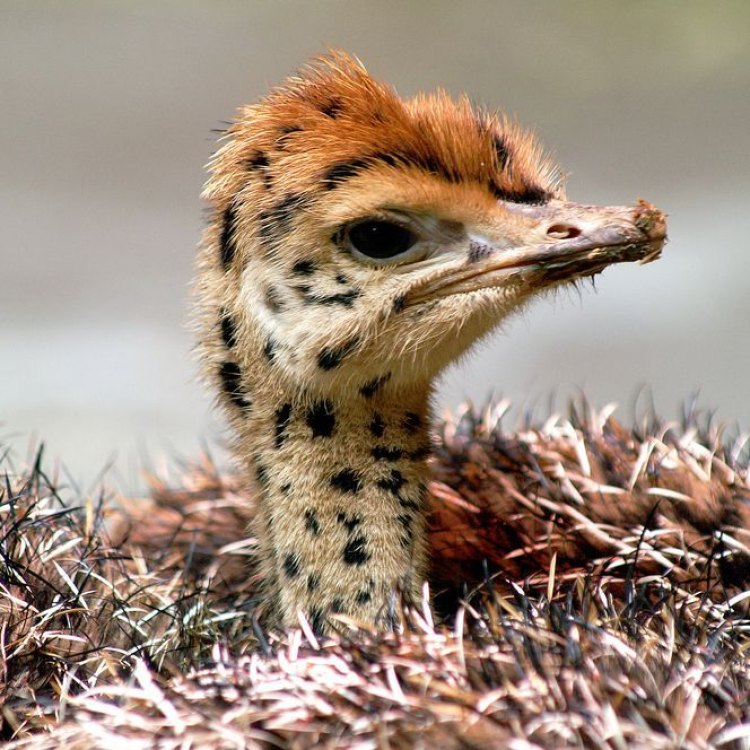
Ostrich
- Adult Size: Up to 9 feet tall and weighing up to 320 pounds
- Average Lifespan: 40 - 60 years
- Reproduction: Sexual
- Reproductive Behavior: Polygynous (males mate with multiple females)
- Sound or Call: Loud roars and hisses
- Migration Pattern: Partially migratory
- Social Groups: Solitary or small groups
- Behavior: Territorial and aggressive
- Threats: Habitat loss, hunting for feathers, meat, and eggs
- Conservation Status: Least Concern
- Impact on Ecosystem: Important seed dispersers
- Human Use: Feathers, meat, eggs, leather
- Distinctive Features: Long neck, long legs, large size
- Interesting Facts: The ostrich is the largest bird species in the world. It has the ability to run at high speeds, reaching up to 43 miles per hour. Ostriches also have the largest eyes of any land animal.
- Predator: Lions, cheetahs, hyenas, leopards
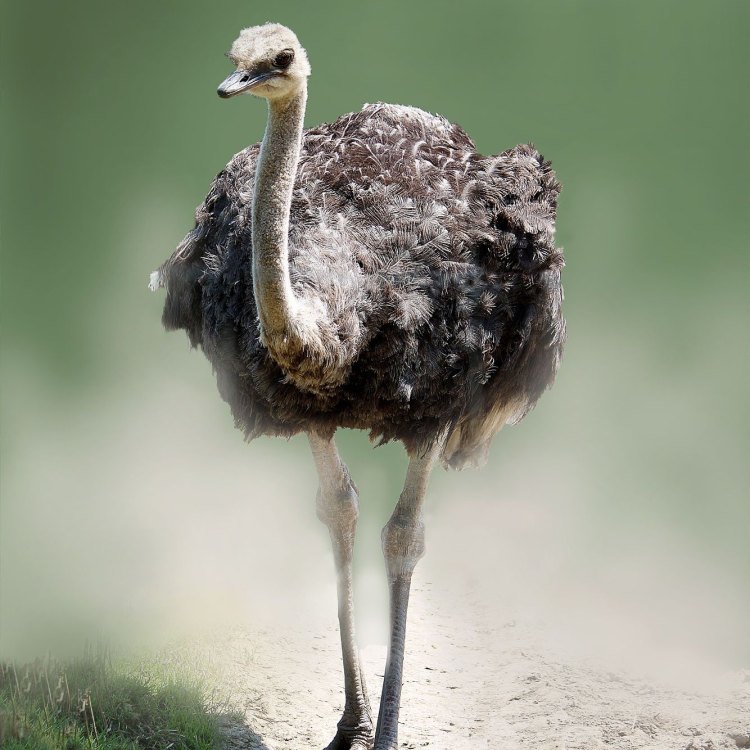
Struthio camelus
The Fascinating World of Ostriches: The Giants of the Bird Kingdom
In the vast world of birds, one species stands out for its immense size, unique features, and intriguing behaviors. The ostrich, scientifically known as Struthio camelus, is a magnificent flightless bird that captures both the imagination and curiosity of humans. With its towering height, territorial nature, and impressive speed, the ostrich has become a symbol of strength and resilience in the animal kingdom.The ostrich is native to the savannas and deserts of Africa, where it can be found in countries such as South Africa, Namibia, Botswana, and Zimbabwe PeaceOfAnimals.Com. It is the largest bird species in the world, with adults reaching up to 9 feet tall and weighing up to 320 pounds. These magnificent creatures have a unique set of characteristics that set them apart from other birds, making them a topic of interest for scientists, as well as the general public.
The Physical Appearance of Ostriches
One cannot talk about ostriches without mentioning their striking physical features. These birds have a distinct appearance that makes them easily recognizable. The most prominent of these features is their long neck, which can reach up to 7 feet in length. Their long legs are also a defining characteristic, with the ability to take long strides that cover up to 16 feet in just one step.Apart from their long neck and legs, ostriches also have unique feathers that add to their majestic aura. Their feathers are soft and fluffy, and they come in various shades of brown, grey, and black. However, what sets them apart is their striking white and black plumage on their wings and tail Orange Spider. These feathers serve not only as an adornment but also as a form of protection, as ostriches can use them to appear larger and intimidate potential predators.
Perhaps the most notable feature of ostriches is their enormous eyes, which are the largest of any land animal. These eyes, framed by long eyelashes, provide them with excellent eyesight and allow them to spot potential predators from a distance. This is essential for their survival, as ostriches are flightless birds and must rely on other means to escape danger.
Behavior and Social Structure
Ostriches are primarily solitary animals, but they may form small groups of up to 10 birds. They are also territorial and will defend their space and resources from other ostriches and potential predators. This territorial behavior is especially prominent during the breeding season, where males will aggressively defend their territory and fight off other males to secure a harem of females to mate with.Speaking of mating, ostriches have a reproductive behavior known as polygyny, where males mate with multiple females during the breeding season. This is due to the fact that female ostriches lay their eggs in communal nests, which can hold up to 60 eggs. The male ostrich will mate with several females and then take on the role of incubating the eggs during the day, while the females will take turns incubating at night. This cooperative breeding strategy is essential for the survival of the species and ensures that the maximum number of eggs hatch successfully.
The Unique Sound of Ostriches
While ostriches may appear gentle and calm, they have a voice that cannot be ignored. These birds are known for their loud roars and hisses, which they use to communicate with other ostriches and attract potential mates. The males are particularly vocal during the breeding season, as they compete for the attention of females and defend their territory from other males.Apart from their vocalizations, ostriches also have a unique physical sound that you may have heard before. When running, their powerful legs create a deep drumming sound that can be heard from afar. This drumming, combined with their roars and hisses, creates a symphony of sounds that are an integral part of the African savanna soundscape.
Partially Migratory Behavior
Unlike other bird species that migrate long distances, ostriches have a partially migratory behavior. This means that while some ostrich populations may migrate in search of water and food, others may remain in their home range throughout the year. They also exhibit seasonal movement patterns in search of better resources, such as during the dry season when water and food become scarce.Threats and Conservation Status
Despite their strength and resilience, ostriches face significant threats in their natural habitat. Habitat loss due to human activities and climate change is one of the main threats to these birds. They also face hunting pressure for their valuable feathers, meat, and eggs. In some cultures, ostrich eggs are considered a delicacy, and their feathers are used for fashion and decoration.Fortunately, the ostrich is listed as "Least Concern" on the IUCN Red List, as their numbers are stable in most parts of their range. However, conservation efforts are still necessary to ensure their long-term survival. Several organizations and national parks in Africa are working to protect ostrich populations and their habitats.
The Role of Ostriches in the Ecosystem
Aside from being an iconic species in the African savanna, ostriches also play a vital role in the ecosystem. As they roam the land in search of food, they disperse plant seeds across vast distances. This dispersal is crucial for maintaining plant diversity and promoting plant growth, which benefits other herbivorous animals in the ecosystem. Ostriches also serve as a food source for predators, contributing to the balance of the food chain.Human Use and the Ostrich Farming Industry
Ostriches have been used by humans for thousands of years, primarily for their feathers, meat, and eggs. In ancient times, the Romans used ostrich feathers for ornamental purposes, and ostrich meat and eggs were consumed by various cultures in Africa. Today, they are still used for these purposes, but technological advancements have also allowed for the ostrich farming industry to flourish.Ostrich farms can be found in many countries around the world, including South Africa, Australia, and the United States. These farms raise ostriches for their feathers, meat, and leather, with the global ostrich farming industry valued at around $1 billion. While some argue that this is a more sustainable way of using ostriches, others believe that it promotes commercialization and harms wild ostrich populations.
Interesting Facts About Ostriches
We can't talk about ostriches without mentioning some interesting and mind-blowing facts about them. Did you know that ostriches have an elaborate system of air sacs in their body that allows them to regulate temperature and humidity? This unique adaptation helps them survive in harsh environments, where temperatures can rise over 100 degrees Fahrenheit.Another fun fact is that ostriches have three stomachs, allowing them to digest food more efficiently. They also have a fused ankle bone, which gives them stability when running at high speeds. And speaking of speed, ostriches can run up to 43 miles per hour, making them the fastest land animal.
Predators of the Ostrich
Despite their massive size and strength, ostriches still face predation from other animals. Lions, cheetahs, hyenas, and leopards are some of the main predators of ostriches in the wild. However, ostriches have developed a few defense mechanisms to evade their predators. Their long legs allow them to run at high speeds, and they also have a powerful kick that can injure or even kill potential attackers.In conclusion, the ostrich is a truly fascinating bird species with a unique set of features, behaviors, and adaptations. With their imposing size, territorial nature, and important role in the ecosystem, it's no wonder why they have captured the attention and admiration of humans. As we continue to learn more about these magnificent birds, let us also strive to protect and conserve them for future generations to appreciate and admire.
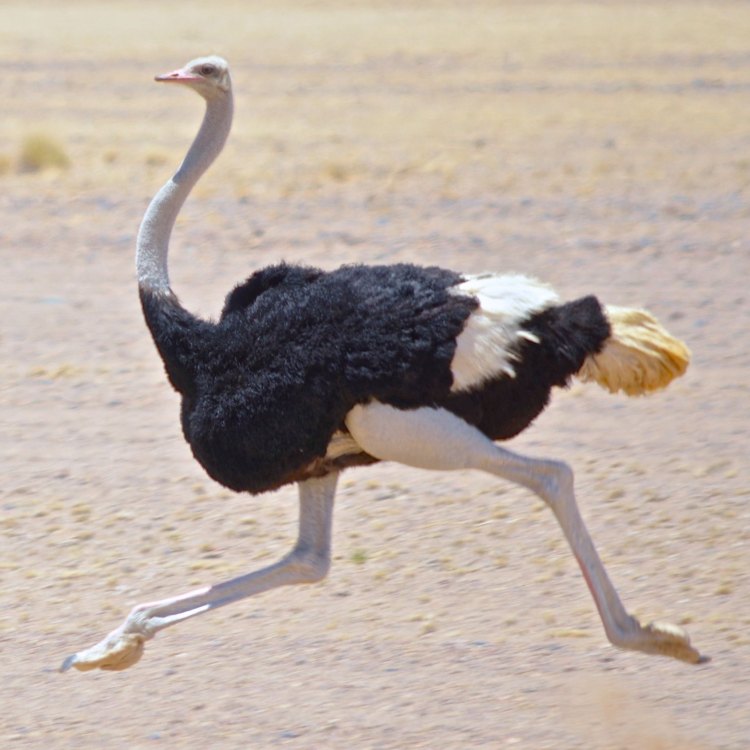
Ostrich: The Majestic Bird of Africa
Disclaimer: The content provided is for informational purposes only. We cannot guarantee the accuracy of the information on this page 100%. All information provided here may change without prior notice.

